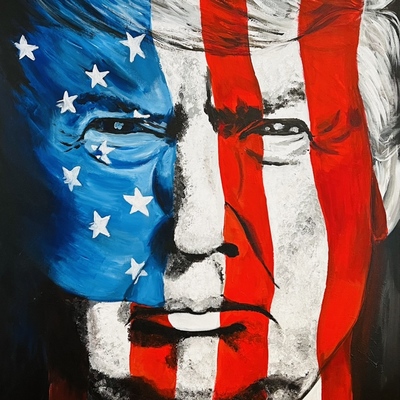Stay informed on the latest Truth Social posts from Donald Trump (@realDonaldTrump) without the doomscrolling. Consider it a public service for your mental health. (Why?)
- An Executive Order titled 'Delivering Most-Favored-Nation Prescription Drug Pricing to American Patients' was signed on May 12, 2025.
- Brand name drug prices in the United States are up to three times higher than elsewhere, attributed to 'global freeloading' and an 'unacceptable burden' on American families.
- Amgen and all manufacturers are called upon to implement specific actions within 60 days to address inflated drug prices.
- Required actions include extending Most-Favored-Nation (MFN) pricing to Medicaid, guaranteeing MFN pricing for newly-launched drugs, returning increased revenues from abroad to American patients and taxpayers, and providing for direct purchasing at MFN pricing.
- The administration is prepared to deploy 'every tool in our arsenal' to protect American families from 'abusive drug pricing practices' if manufacturers do not comply.
- The deadline for achieving these goals is September 29, 2025.
The post directly targets pharmaceutical companies, demanding significant changes to their pricing models by a specific deadline. The 'Most-Favored-Nation' pricing implies a substantial reduction in revenue and profit margins for drug manufacturers, which are major constituents of the S&P 500. This could lead to a significant decline in the stock prices of pharmaceutical companies and potentially the broader healthcare sector, causing a notable impact on the S&P 500 index. The threat of 'every tool in our arsenal' if companies do not comply signals the administration's determination to enforce these measures.
The letter characterizes other nations as 'freeloading' on American innovation and states that U.S. trade policy will support efforts to return increased revenues abroad to American patients and taxpayers. This rhetoric, while focused on economic policy, could lead to diplomatic friction or trade disputes with countries currently benefiting from lower drug prices, but it does not contain threats of military action or direct calls for international conflict escalation.
- Commodities: Gold (XAU) might see a slight increase if the policy causes broader market uncertainty or if it is perceived as protectionist, leading to a weaker USD over the medium term. Oil (WTI) is unlikely to be directly impacted unless the policy significantly dents global economic growth. Short-Term Watchlist: XAU/USD price action. Medium-Term Focus: Inflation trends, USD trajectory.
- Currencies (Forex): The US Dollar Index (DXY) could see some volatility. If the policy is seen as detrimental to US corporate profits or leads to trade disputes, it could put downward pressure on the USD. Watch pairs like EURUSD and USDJPY for initial reactions. Short-Term Watchlist: Treasury yields, global risk sentiment. Medium-Term Focus: Global growth differentials.
- Global Equities: The S&P 500 and Nasdaq would be significantly impacted due to the direct pressure on pharmaceutical and biotech companies. STOXX 600, Nikkei 225, and Hang Seng could also be affected due to the global nature of pharmaceutical companies and potential for similar pricing pressures to spread or affect US-exposed companies. Short-Term Watchlist: Futures open, sector rotation within equities (away from pharma), VIX spike. Medium-Term Focus: Earnings revisions for pharma.
- Fixed Income (Bonds): US 10Y and 2Y yields could see a slight dip if the policy creates general market uncertainty, leading to a flight to safety into Treasuries. Credit spreads for pharmaceutical companies could widen if their profitability is significantly eroded. Short-Term Watchlist: UST 10Y yield levels, credit ETF flows. Medium-Term Focus: Fiscal concerns.
- Volatility / Derivatives: The VIX could see a moderate spike due to increased uncertainty regarding corporate earnings in a major sector and potential for political confrontation with industry. Options positioning on pharmaceutical stocks would reflect increased bearish sentiment or hedging activity. Short-Term Watchlist: VIX levels vs VIX futures term structure. Medium-Term Focus: Volatility regime shifts, macro policy uncertainty.
- Crypto / Digital Assets: Bitcoin (BTC) might behave as a risk-on asset initially, correlating with tech stocks if the broader market is impacted negatively. Unlikely to be a primary driver for crypto. Short-Term Watchlist: BTC/USD, ETH correlation. Medium-Term Focus: Macro liquidity backdrop.
- Cross-Asset Correlations and Systemic Risk: Could see some localized correlation shifts within the healthcare sector. Unlikely to trigger systemic liquidity stress or margin calls across the entire market unless the policy leads to widespread corporate distress beyond pharma. Short-Term Watchlist: MOVE index, sector-specific bond ETFs. Medium-Term Focus: Central bank intervention.
- Retail Sentiment / Market Psychology: Retail investors might react to headlines about drug price reductions, potentially leading to speculation in specific healthcare stocks, either on the short or long side, or a general shift in sentiment towards healthcare. Short-Term Watchlist: Twitter/X trends, Reddit sentiment regarding specific pharma stocks. Medium-Term Focus: Social media influence on sector performance.

